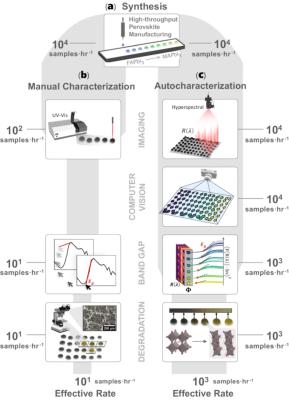Researchers show how 2D perovskitoids enhance stability in perovskite solar cells
Researchers from Northwestern University, University of Toronto and KAUST have hypothesized that perovskitoids, with robust organic-inorganic networks enabled by edge- and face-sharing, could impede ion migration. This addresses the issue of the migration of cations between 2D and 3D layers which results in the disruption of octahedral networks that leads to degradation in performance over time
The scientists explored a set of perovskitoids of varying dimensionality, and found that cation migration within perovskitoid/perovskite heterostructures was suppressed compared to the 2D/3D perovskite case. Increasing the dimensionality of perovskitoids improves charge transport when they are interfaced with 3D perovskite surfaces – the result of enhanced octahedral connectivity and out-of-plane orientation.






